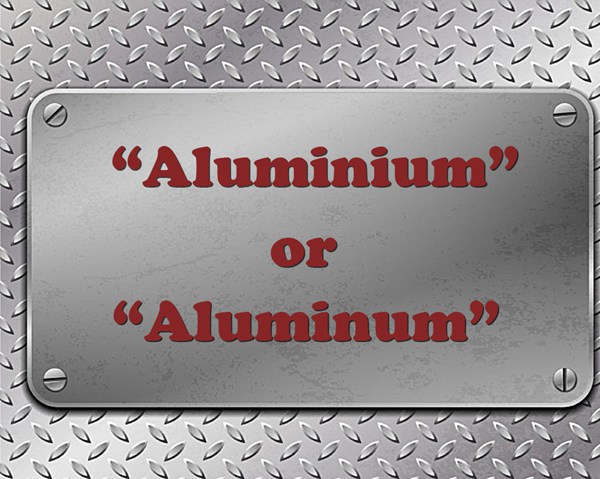Introduction
Aluminium and aluminum: two words that refer to the same chemical element with slightly different spellings. While the distinction between “aluminium” and “aluminum” may appear trivial, it has sparked an ongoing debate. Is there a real difference between these two terms, or is it simply a matter of regional spelling variations? In this article, we will explore the history, science, and usage behind these two spellings, shedding light on the aluminium vs. aluminum debate.

The Origin of the Names
The fundamental difference between “aluminium” and “aluminum” lies in the origin of the names. The element was first discovered and named in the late 18th century.
Aluminium: The British Spelling
Sir Humphry Davy, an English chemist, was one of the early pioneers of isolating the element. In 1808, he proposed the name “aluminum” for the new element. This name was later modified to “aluminium” to align with the naming conventions of other elements, such as potassium and sodium.
This British spelling, “aluminium,” is still used by many countries today, including the United Kingdom, Canada, and Australia. It is the older and more traditional version of the word.
Aluminum: The American Spelling
The American version of the word, “aluminum,” is a modification of Davy’s original name “aluminum.” In 1828, American chemist Noah Webster proposed the change to “aluminum” to make the word more consistent with other element names, and this simplified spelling eventually gained widespread use in the United States.
Science and Chemistry
From a scientific standpoint, there is no difference in the element’s properties whether it’s referred to as “aluminium” or “aluminum.” It is the same chemical element with the symbol Al and atomic number 13, regardless of the spelling.
Usage and Regional Preferences
The choice of spelling largely depends on the region and language conventions. For instance:
1. United Kingdom and Commonwealth Countries
In the United Kingdom, Canada, Australia, and other Commonwealth nations, “aluminium” is the standard and widely accepted spelling. It is used in scientific literature, official documents, and everyday conversation. For example, “aluminium foil” is commonly used in the UK to describe the thin metal sheet used in cooking.
2. United States
In the United States, “aluminum” is the prevailing and accepted spelling. It is used in scientific publications, manufacturing, and daily language. American dictionaries and style guides endorse the use of “aluminum.”
3. International Standards
To add another layer of complexity, the International Union of Pure and Applied Chemistry (IUPAC) officially adopted the spelling “aluminium” in 1990. Despite this, “aluminum” is still widely used, especially in the United States.
Cultural Significance
The aluminium vs. aluminum debate sometimes carries cultural significance and linguistic pride. People in different regions can be quite attached to their preferred spelling, and the choice is often seen as a reflection of linguistic heritage.
In the aluminium vs. aluminum debate, it’s essential to understand that there is no scientific difference between the two spellings. They both refer to the same chemical element, aluminum, with the symbol Al. The choice of spelling primarily depends on regional and linguistic conventions, and there is no “correct” or “incorrect” way to spell it.
In practice, it’s essential to be aware of the regional context and use the preferred spelling when communicating in a specific region. Whether you say “aluminium” or “aluminum,” the meaning is crystal clear, and the element itself remains unchanged. So, the next time you encounter this debate, remember that it’s all a matter of spelling, not substance.
